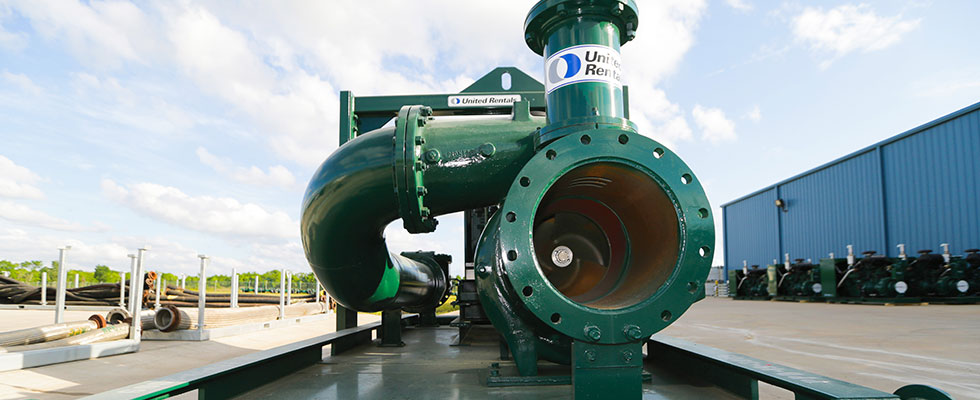
For most construction contractors, the discovery of per- and polyfluoroalkyl substances (PFAS) during a dewatering project is not only unwelcome, but also intimidating. These so-called forever chemicals are thought to cause serious health problems, from reproductive health issues to cancer, when ingested. The Environmental Protection Agency (EPA) has become equally serious about tackling PFAS contamination, recently lowering suggested limits for two PFAS chemicals in drinking water to 70 parts per trillion— a concentration near zero.
PFAS are a group of man-made chemicals that were used for decades in countless products, including nonstick pans, stain-resistant fabrics and fire-fighting foams because of their ability to resist grease, oil and water. Today,
they are found at low levels all over the planet, having made their way into air, water and soil.
Stable and heat resistant, PFAS are long lasting and all but impossible to break down into less hazardous chemicals. As a result, physical media filtration is the only way to remove them from water.
What Does Finding PFAS in Groundwater Mean?
Based on EPA guidelines, many states and localities have issued maximum contaminant levels for two PFAS compounds, perfluorooctanoic acid (PFOA) and perfluorooctanesulfonic acid (PFOS). Water treatment plants and wastewater treatment plants are growing accustomed to removing these chemicals. However, for contractors performing work in the dirt, such as building or repairing underground infrastructure, finding PFAS during groundwater testing can throw a wrench into a project’s schedule and budget.
Contractors must take the time to identify and implement a remediation solution that will bring PFAS concentrations within regulatory limits, preferably with as little downtime as possible. However, most contractors are not experts in water treatment, let alone PFAS filtration.
Project leaders typically seek the help of third-party providers of water treatment solutions. The choice of provider can make the difference between an expensive solution and a less expensive, but equally effective one.
Identifying a PFAS Remediation Solution
To remove PFAS, consulting firms often advise a fully engineered water treatment system, one with a price tag that matches the custom design. But for rushed projects or projects that involve relatively small amounts of contaminated water, a plug-and-play temporary on-site water treatment solution provides the same or better results in many cases.
Several physical media filtration solutions can be used to filter PFAS from water, including ion exchange (IX) resins, granular activated carbon (GAC) and membrane systems, such as nanofiltration reverse osmosis (RO). The ideal solution depends on a host of factors, including the water chemistry and pH, the volume and flow rate of the water and whether other contaminants are present that need to be removed, such as metals, volatile organic compounds, natural organic carbon and suspended solids.
Treating other contaminants first is vital. Otherwise, they may exhaust the physical media used to filter PFAS. In some cases, those contaminants can be removed more effectively through other means. Removing non-PFAS contaminants at the beginning of the treatment train can reduce changeouts of PFAS media filters, cutting consumable costs while allowing for more effective groundwater remediation.
Tips for Choosing a Temporary Water Treatment Provider
Identifying the best filtration approach and system design requires understanding the challenges of PFAS remediation and the nuances of the different treatment technologies. For that reason, it is critical to choose a provider with considerable experience in PFAS treatment.
Problems commonly arise with systems designed by those who lack the required expertise. For example, systems may be undersized for the application or fail to provide adequate contact time with the media, as longer contact times are often required for PFAS removal.
How can contractors make the best choice of water treatment solution provider? Start by gauging the provider’s familiarity with PFAS. If the representative does not know what the letters stand for, move on to the next provider. If the company suggests a treatment solution that sounds overly technical, it probably is. An effective PFAS treatment solution can be simple and affordable.
Because PFAS removal is relatively new, there are currently few experts in PFAS remediation in the United States or elsewhere, so ask the company for references. A company with the necessary depth of experience should be able to point users to satisfied customers from current or past PFAS remediation projects involving groundwater contamination.
How far away is the company based? A company that has a knowledgeable local representative who can visit the site on short notice brings a lot of value, not only when technical support is needed but also if an unforeseen challenge arises.
For example, it is not uncommon for new, unexpected containments to emerge during a dewatering project. Fresh rainfall, contaminant striation and groundwater migration can all lead to the emergence of contaminants not found during initial testing, which may call for additions or changes to a temporary water treatment system. A qualified water treatment partner can react quickly to shifting project needs.
With supply chain shortages wreaking havoc across every industry, be sure to ask about the size of the company’s water treatment fleet. Choose a company that offers immediate equipment and consumable availability to avoid delays.
PFAS can strike fear in the hearts of contractors, but PFAS remediation is possible with the appropriate technologies and system design. In some cases, a temporary water treatment solution is the best solution at the best price. When in doubt, seek multiple opinions or ask for alternative quotes. The right partner can offer a solution that is easy to use, gets the job done quickly and preserves profits.

